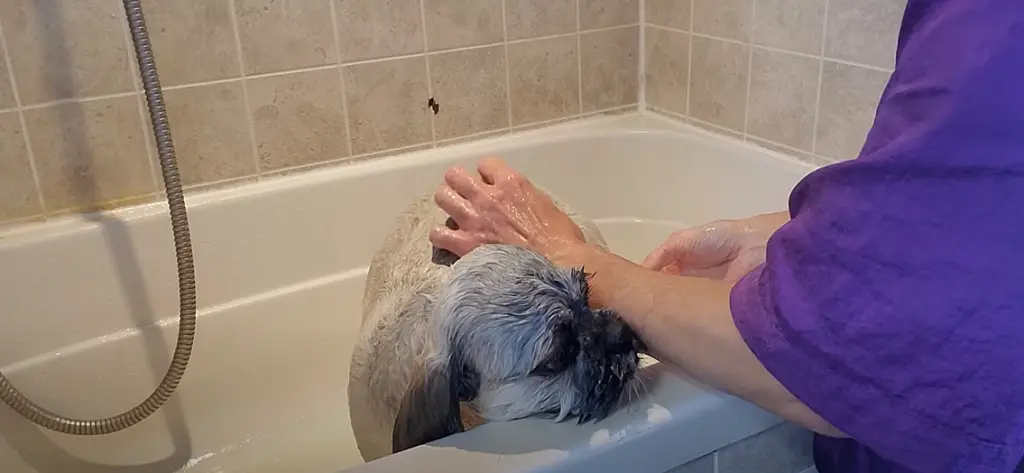When a Shih Tzu ends up in a shelter, their experiences can vary greatly depending on the shelter’s resources, policies, and staff dedication. Despite these differences, there are common practices and procedures that many shelters follow to ensure that every rescued Shih Tzu receives the care and attention they need. This blog post will explore the various stages of care that a Shih Tzu might go through during their stay at a shelter, including the initial assessment, essential care needs, and medical attention they typically receive.

Initial Assessment and Shelter Conditions
Upon arrival at a shelter, a Shih Tzu will undergo an initial assessment to determine their overall health, temperament, and immediate needs. This crucial period sets the foundation for their care plan and future well-being.
1. Health Evaluation: The first step is usually a comprehensive health check performed by a veterinarian or trained staff. This evaluation includes checking for signs of illness, injuries, and parasites. Blood tests may be conducted to screen for common diseases, and any urgent medical issues are addressed immediately.

2. Behavioral Assessment: Understanding a Shih Tzu’s temperament is essential for their care and eventual adoption. Shelter staff observe the dog’s behavior to identify any signs of anxiety, aggression, or fear. This assessment helps in determining the best approach to their rehabilitation and socialization.
3. Shelter Environment: The conditions of the shelter itself play a significant role in the Shih Tzu’s experience. Ideally, shelters provide a clean, safe, and comfortable environment, but the reality can vary widely. Some shelters have state-of-the-art facilities with ample space, while others may struggle with overcrowding and limited resources. Foster homes often provide a more stable and homelike environment, which can be beneficial for the dog’s recovery and socialization.

Essential Care Needs
Shih Tzus have specific care requirements, especially when they come from situations of neglect or abandonment. Addressing these needs is crucial for their recovery and well-being.
1. Coat Maintenance: Shih Tzus have long, luxurious coats that require regular grooming to prevent matting and skin problems. Upon arrival at the shelter, many Shih Tzus need a thorough grooming session, including bathing, brushing, and trimming. Regular grooming sessions are scheduled to maintain their coat’s health and appearance.

2. Nutritional Rehabilitation: Malnutrition is a common issue among rescued dogs. Shelters provide a balanced diet tailored to the Shih Tzu’s age, weight, and health status. High-quality dog food and supplements are often used to help underweight or nutritionally deficient dogs regain their health.
3. Emotional Support: Rescued Shih Tzus often experience stress and anxiety due to the sudden change in their environment. Providing emotional support is vital. Shelter staff and volunteers spend time with the dogs, offering comfort, affection, and gentle interaction to help them feel safe and loved.

Medical Attention
Proper medical care is a cornerstone of a rescued Shih Tzu’s journey to recovery. Shelters ensure that these dogs receive the necessary treatments to address both immediate and long-term health issues.
1. Vaccinations: Ensuring that rescued Shih Tzus are up-to-date on vaccinations is a priority. Common vaccines include those for rabies, distemper, parvovirus, and adenovirus. These vaccinations protect the dogs from contagious diseases and are typically administered shortly after their arrival.

2. Spaying/Neutering: To help control the pet population and prevent future litters, most shelters spay or neuter rescued Shih Tzus. This procedure also has health benefits, such as reducing the risk of certain cancers and behavioral issues.
3. Parasite Control: Shelters treat rescued Shih Tzus for internal and external parasites, such as fleas, ticks, and worms. Regular treatments and preventatives are administered to ensure the dogs remain parasite-free.
4. Ongoing Medical Care: Some Shih Tzus may arrive with chronic conditions or require additional treatments for injuries or illnesses. Shelters provide ongoing medical care, which can include surgeries, dental care, and medication management. Veterinarians work closely with shelter staff to monitor the dogs’ health and adjust their care plans as needed.

Conclusion: A Lifeline for Rescued Shih Tzus
The care and attention a rescued Shih Tzu receives during their time in a shelter or foster home are vital for their well-being and future happiness. Shelters play a critical role in providing the necessary medical care, grooming, nutrition, and emotional support to help these dogs recover from their past experiences.
By understanding the specific needs of rescued Shih Tzus and the efforts made by shelters to address these needs, we can better appreciate the importance of supporting animal rescue organizations. Whether through volunteering, donating, or adopting, we all have the power to make a positive impact on the lives of these deserving dogs.
Providing compassionate care and a safe environment for rescued Shih Tzus not only improves their quality of life but also prepares them for a smooth transition into a loving forever home. The journey of a rescued Shih Tzu is a testament to the resilience and enduring spirit of these wonderful dogs, and it reminds us of the profound difference that dedicated care and attention can make in their lives.
In conclusion, adopting a Shih Tzu from a shelter is not just about giving a dog a home; it’s about being part of a transformative journey that leads to health, happiness, and a new beginning. By opening our hearts and homes to these dogs, we contribute to a cycle of rescue, rehabilitation, and love that ultimately benefits the entire community.


